The built-in file management tool, File Explorer, comes with a useful Auto Completion feature. When enabled, it automatically appends the suggested text to the letters you type in the Run dialog, in the address bar and in Open and Save dialogs of apps. It allows you to speed up your work and save your time. Auto Completion can be enabled in File Explorer with a simple Registry tweak in all modern operating systems including Windows 10, Windows 8 and Windows 7.
Advertisеment
When Auto Completion is enabled, File Explorer tries to guess what you are going to type. It analyses the input history and the contents of the opened directory when a Save or Open dialog is loaded. The Auto Completion feature is not enabled by default, but you can turn it on with a simple Registry tweak.
Enable Auto Completion in File Explorer in Windows 10
You will need to create a new Registry subkey and one string value. Here is what you have to do.
- Open Registry Editor.
- Go to the following Registry key:
HKEY_CURRENT_USER\Software\Microsoft\Windows\CurrentVersion\Explorer
Tip: How to jump to the desired registry key with one click.
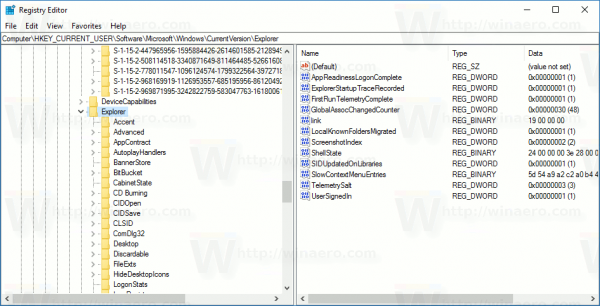
- Here, create a new subkey called AutoComplete.
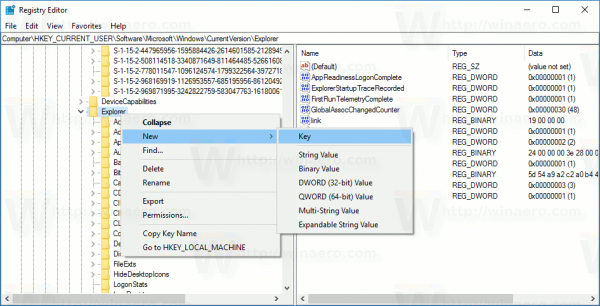
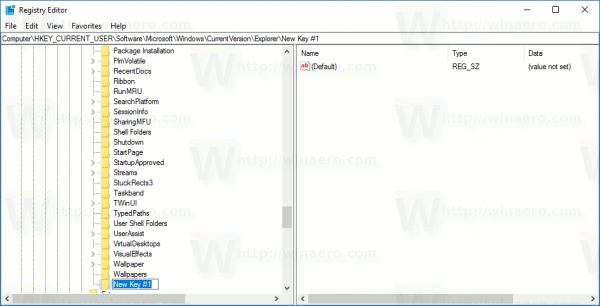
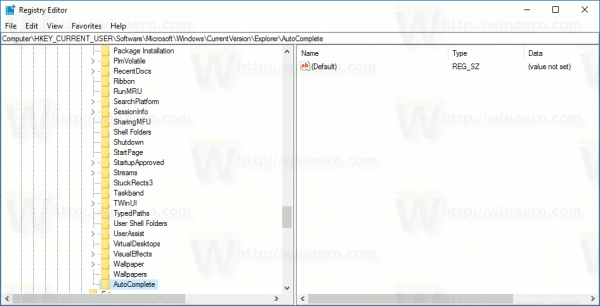
- Under the AutoComplete key, create a new string value named Append Completion. Set its value data to "yes" to activate the feature.
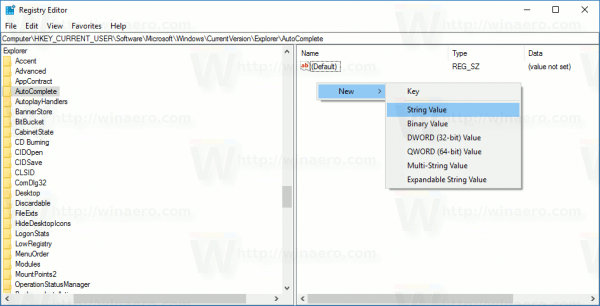
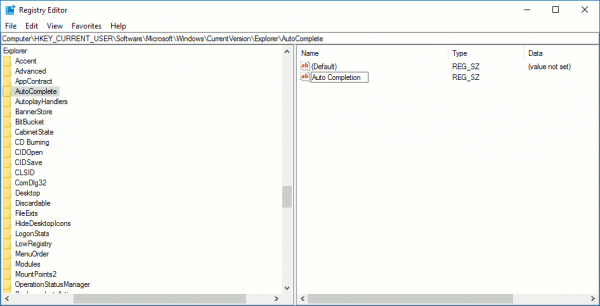
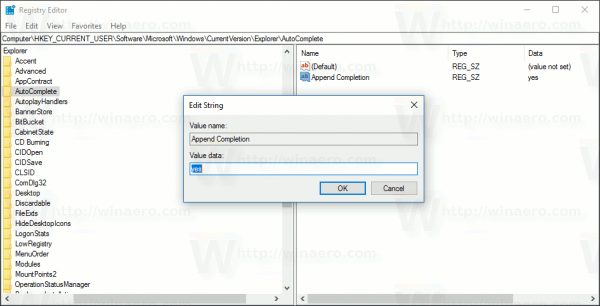
- Sign out from your account and log in back.
This will activate the Auto Completion feature.
Alternatively, you can enable the Auto Completion feature from Internet Explorer Options. It is not clear why Microsoft put it there, but there is an option for File Explorer in the classic Internet Properties applet. Let's see how it can be turned on.
Auto Completion in Internet Explorer options
- Open the classic Control Panel app.
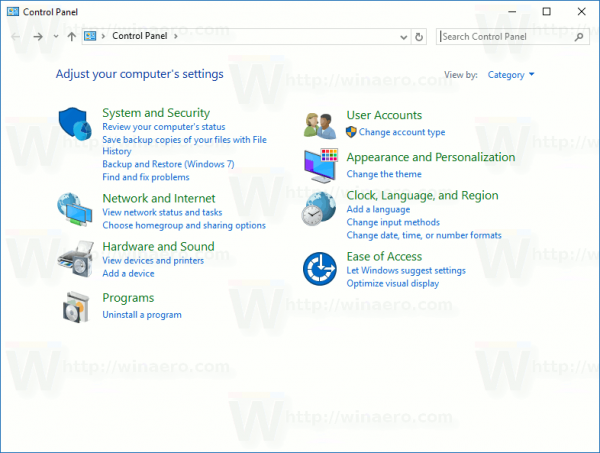
- Go to Control Panel\Network and Internet\Internet Options.
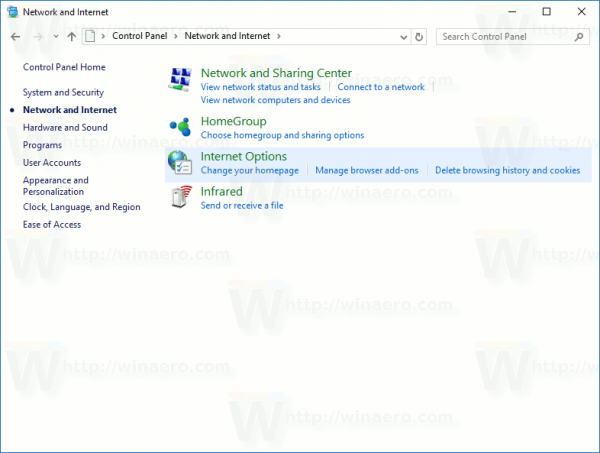
- The Internet Properties dialog will be opened on the screen.
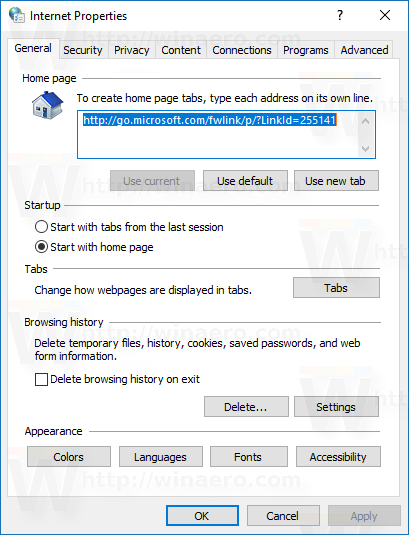 There, go to the tab "Advanced".
There, go to the tab "Advanced".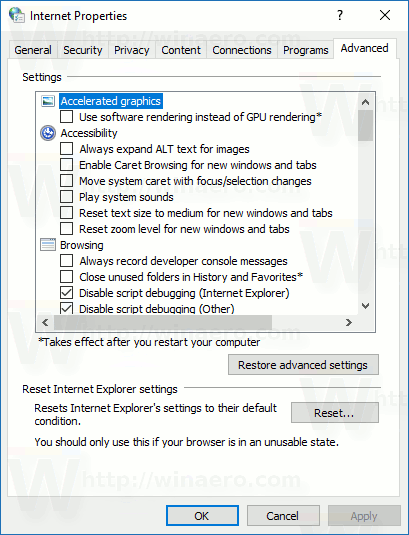
- Scroll down to the option Enable inline AutoComplete in File Explorer and Run Dialog.
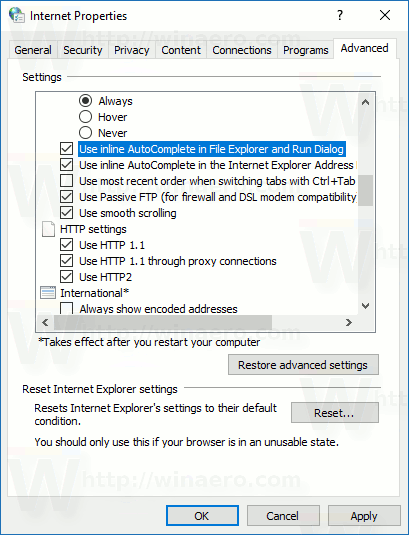
Turn it on.
Now you can test the Auto Completion feature in action.
Auto Completion in the Run dialog
Type one of the previous commands you entered in the Run box. It will not only be displayed in the dropdown list but its text will be added to the Run box. You need not type the whole command any more: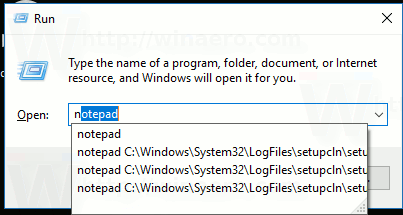
As you can see from the screenshot above, I can type just one letter "n" to run Notepad.
Auto Completion in the address bar of File Explorer
Type some location in the address bar, and File Explorer will complete the path for you. This is very useful, especially when you need to type a long path.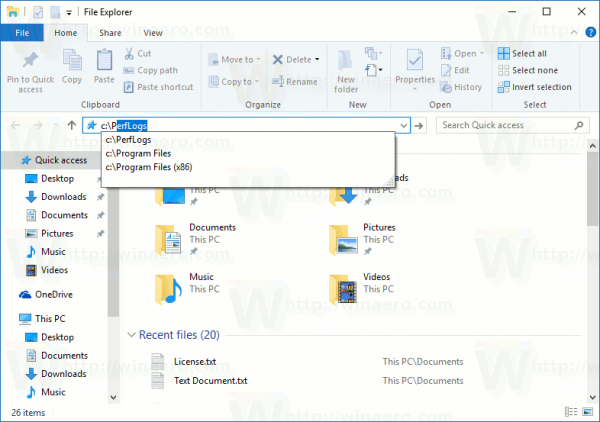
Auto Completion in Open and Save dialogs
All installed apps will benefit from the tweak you applied. In every Open and Save dialog you will be able to type a few letters of the document to get its name completed in the input box. See the following screenshot: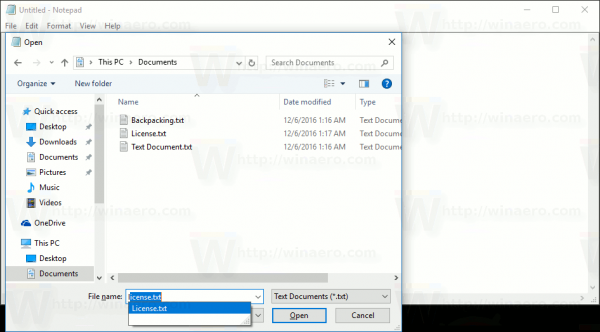
To save your time, I prepared ready-to-use Registry files. Get them here:
Don't forget to sign out and sign in back to apply the changes.
Tip: If the feature does not work for you, ensure that your File Explorer history is not turned off. See this article: Fix Run does not save command history in Windows 10.
That's it.
Support us
Winaero greatly relies on your support. You can help the site keep bringing you interesting and useful content and software by using these options:

“Download Registry Files” doesn’t work
Sorry, I forgot to upload them :)
Fixed!
After opening the registry key i saw that this ‘AutoComplete’ subkey is already present. But i have two string values there, the “Append Completion” and a second one named “AutoSuggest” (both set to “yes”). I don’t know the difference but it may be of interest. I’m using Win 7 Pro x64.
AutoSuggest enables suggestions in Explorer. That thing which appears in the Run dialog and Open/Save dialogs in the drop down list. It is enabled by default in all modern Windows versions.
You can set it to “no”, then suggestions won’t appear.
If any new tweaks that you find applies to other versions of Windows beside 10, why not have the title of the post be something like “…. in Windows” instead of “… in Windows 10”
Thanks for the suggestion, I will change it.
I used the registry files but it doesnt work for me in windows explorer, but it does in run. using the last update 1809
Hello the autocomplete still doesn’t work in my Open dialog box. When opening files in Chrome or Notepad it doesn’t autofill the filename. It works in the Run dialog box and File explorer address bar though.
Add the folders with the images you want to tag to the index, via indexing options in control panel